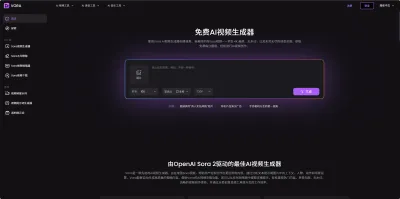hdmi
English | Français | Help translate
SystemVerilog code for HDMI 1.4b video/audio output on an FPGA.
Why?
Most free and open source HDMI source (computer/gaming console) implementations actually output a DVI signal, which HDMI sinks (TVs/monitors) are backwards compatible with. To support audio and other HDMI-only functionality, a true HDMI signal must be sent. The code in this repository lets you do that without having to license an HDMI IP block from anyone.
Demo: VGA-compatible text mode, 720x480p on a Dell Ultrasharp 1080p Monitor

License
This project is dual-licensed under MIT and Apache 2.0.
SPDX-License-Identifier: MIT OR Apache-2.0
Usage
- Take files from
src/and add them to your own project. If you use hdlmake, you can add this repository itself as a remote module. - Other helpful modules for displaying text / generating sound are also available in this GitHub organization.
- Consult the simple usage example in
top/top.sv. - See hdmi-demo for code that runs the demo as seen the demo GIF.
- Read through the parameters in
hdmi.svand tailor any instantiations to your situation. - Please create an issue if you run into a problem or have any questions. Make sure you have consulted the troubleshooting section first.
Platform Support
- Altera (tested on MKR Vidor 4000)
- Xilinx (tested on Spartan Edge Accelerator Board)
- Lattice (unknown)
- Gowin (WIP, active testing on Tang Nano 9K)
To-do List (upon request)
- 24-bit color
- Data island packets
- Null packet
- ECC with BCH systematic encoding GF(2^8)
- Audio clock regeneration
- L-PCM audio
- 2-channel
- 3-channel to 8-channel
- 1-bit audio
- Audio InfoFrame
- Auxiliary Video Information InfoFrame
- Source Product Descriptor InfoFrame
- MPEG Source InfoFrame
- NOTE—Problems with the MPEG Source Infoframe have been identified that were not able to be fixed in time for CEA-861-D. Implementation is strongly discouraged until a future revision fixes the problems
- Gamut Metadata
- Video formats 1, 2, 3, 4, 16, 17, 18, and 19
- VGA-compatible text mode
- IBM 8x16 font
- Alternate fonts
- Other color formats (YCbCr, deep color, etc.)
- Support other video id codes
- Interlaced video
- Pixel repetition
Pixel Clock
You'll need to set up a PLL for producing the two HDMI clocks. The pixel clock for each supported format is shown below:
| Video Resolution | Video ID Code(s) | Refresh Rate | Pixel Clock Frequency | Progressive/Interlaced |
|---|---|---|---|---|
| 640x480 | 1 | 60Hz | 25.2MHz | P |
| 640x480 | 1 | 59.94Hz | 25.175MHz | P |
| 720x480 | 2, 3 | 60Hz | 27.027MHz | P |
| 720x480 | 2, 3 | 59.94Hz | 27MHz | P |
| 720x576 | 17, 18 | 50Hz | 27MHz | P |
| 1280x720 | 4 | 60Hz | 74.25MHz | P |
| 1280x720 | 4 | 59.94Hz | 74.176MHz | P |
| 1280x720 | 19 | 50Hz | 74.25MHz | P |
| 1920x1080 | 16 | 60Hz | 148.5MHz | P |
| 1920x1080 | 16 | 59.94Hz | 148.352MHz | P |
| 1920x1080 | 34 | 30Hz | 74.25MHz | P |
| 1920x1080 | 34 | 29.97Hz | 74.176MHz | P |
| 3840x2160 (not ready) | 97, 107 | 60Hz | 594MHz | P |
| 3840x2160 | 95, 105 | 30Hz | 297MHz | P |
The second clock is a clock 5 times as fast as the pixel clock. Even if your FPGA only has a single PLL, the Altera MegaWizard (or the Xilinx equivalent) should still be able to produce both. See hdl-util/hdmi-demo for example PLLs.
L-PCM Audio Bitrate / Sampling Frequency
Both audio bitrate and frequency are specified as parameters of the HDMI module. Bitrate can be any value from 16 through 24. Below is a simple mapping of sample frequency to the appropriate parameter
WARNING: the audio can be REALLY LOUD if you use the full dynamic range with hand-generated waveforms! Using less dynamic range means you won't be deafened! (i.e. audio_sample >> 8 )
| Sampling Frequency | AUDIO_RATE value |
|---|---|
| 32 kHz | 32000 |
| 44.1 kHz | 44100 |
| 88.2 kHz | 88200 |
| 176.4 kHz | 176400 |
| 48 kHz | 48000 |
| 96 kHz | 96000 |
| 192 kHz | 192000 |
Source Device Information Code
This code is sent in the Source Product Description InfoFrame via SOURCE_DEVICE_INFORMATION to give HDMI sinks an idea of what capabilities an HDMI source might have. It may be used for displaying a relevant icon in an input list (i.e. DVD logo for a DVD player).
| Code | Source Device Information |
|---|---|
| 0x00 | Unknown |
| 0x01 | Digital Set-top Box |
| 0x02 | DVD Player |
| 0x03 | Digital VHS |
| 0x04 | HDD Videorecorder |
| 0x05 | Digital Video Camera |
| 0x06 | Digital Still Camera |
| 0x07 | Video CD |
| 0x08 | Game |
| 0x09 | PC General |
| 0x0a | Blu-Ray Disc |
| 0x0b | Super Audio CD |
| 0x0c | HD DVD |
| 0x0d | Portable Media Player |
Things to be aware of / Troubleshooting
- Limited resolution: some FPGAs don't support I/O at speeds high enough to achieve 720p/1080p
- Workaround: Altera FPGA users can try to specify speed grade C6 and see if it works, though yours may be C7 or C8. Beware that this might introduce some system instability.
- FPGA does not support TMDS: many FPGAs without a dedicated HDMI output don't support TMDS
- You should be able to directly use LVDS (3.3v) instead, tested up to 720x480
- This might not work if your video has a high number of transitions or you plan to use higher resolutions
- Solution: AC-couple the 3.3v LVDS wires to by adding 100nF capacitors in series, as close to the transmitter as possible
- Why? TMDS is current mode logic, and driving a CML receiver with LVDS is detailed in Figure 9 of Interfacing LVDS with other differential-I/O types
- Resistors are not needed since Vcc = 3.3v for both the transmitter and receiver
- Example: See
J13, on the Arduino MKR Vivado 4000 schematic, where LVDS IO Standard pins on a Cyclone 10 FPGA have 100nF series capacitors
- Why? TMDS is current mode logic, and driving a CML receiver with LVDS is detailed in Figure 9 of Interfacing LVDS with other differential-I/O types
- Poor wiring: if you're using a breakout board or long lengths of untwisted wire, there might be a few pixels that jitter due to interference
- Make sure you have all the necessary pins connected (GND pins, etc.)
- Try switching your HDMI cable; some cheap cables like these I got from Amazon have poor shielding
- Hot-Plug unaware: all modules are unaware of hotplug
- This shouldn't affect anything in the long term; the only stateful value is
hdmi.tmds_channel[2:0].acc - You should decide hotplug behavior (i.e. pause/resume on disconnect/connect, or ignore it)
- This shouldn't affect anything in the long term; the only stateful value is
- EDID not implemented: it is assumed you know what format you want at synthesis time, so there is no dynamic decision on video format
- To be implemented in a display protocol independent manner
- SCL/SCA voltage level: though unused by this implementation...it is I2C on a 5V logic level, as confirmed in the TPD12S016 datasheet, which is unsupported by most FPGAs
- Solution: use a bidirectional logic level shifter compatible with I2C to convert 3.3v LVTTL to 5v
- Solution: use 3.3-V LVTTL I/O standard with 6.65k pull-up resistors to 3.3v (as done in
J13on the Arduino MKR Vivado 4000 schematic) - Emailed Arduino support: safe to use as long as the HDMI slave does not have pull-ups
Licensing
Dual-licensed under Apache License 2.0 and MIT License.
HDMI Adoption
I am NOT a lawyer, the below advice is given based on discussion from a Hacker News post and my research.
HDMI itself is not a royalty free technology, unfortunately. You are free to use it for testing, development, etc. but to receive the HDMI LA's (licensing administration) blessing to create and sell end-user products:
The manufacturer of the finished end-user product MUST be a licensed HDMI Adopter, and The finished end-user product MUST satisfy all requirements as defined in the Adopter Agreement including but not limited to passing compliance testing either at an HDMI ATC or through self-testing.
Becoming an adopter means you have to pay a flat annual fee (~ $1k-$2k) and a per device royalty (~ $0.05). If you are selling an end-user device and DO NOT want to become an adopter, you can turn on the DVI_OUTPUT parameter, which will disable any HDMI-only logic, like audio.
Please consult your lawyer if you have any concerns. Here are a few noteworthy cases that may help you make a decision:
- Arduino LLC is not an adopter, yet sells the Arduino MKR Vidor 4000 FPGA
- It has a micro-HDMI connector
- Having an HDMI connector does not require a license
- Official examples provided by Arduino on GitHub only perform DVI output
- It is a user's choice to program the FPGA for HDMI output
- Therefore: the device isn't an end-user product under the purview of HDMI LA
- Unlicensed DisplayPort to HDMI cables (2011)
- Articles suggests that the HDMI LA can recall illegal products.
- But these cables are still sold on Amazon
- Therefore: the power of HDMI LA to enforce licensing is unclear
- Terminated Adopters
- There are currently 1,043 terminated adopters
- Includes noteworthy companies like Xilinx, Lattice Semiconductor, Cypress Semiconductor, EVGA (!), etc.
- No conclusion
- Raspberry Pi Trading Ltd is licensed
- They include the HDMI logo for products
- Therefore: Raspberry Pi products are legal, licensed end-user products
Alternative Implementations
- HDMI Intel FPGA IP Core: Stratix/Arria/Cyclone
- Xilinx HDMI solutions: Virtex/Kintex/Zynq/Artix
- Artix 7 HDMI Processing: VHDL, decode & encode
- SimpleVOut: many formats, no auxiliary data
If you know of another good alternative, open an issue and it will be added.
Reference Documents
These documents are not hosted here! They are available on Library Genesis and at other locations.
- HDMI Specification v1.4b (dead link but also on libgen)
- HDMI Specification v2.0 (dead link but also on libgen)
- EIA-CEA861-D.pdf
- CTA-861-G.pdf (dead link but also on libgen)
- DVI Specification v1.0
- IEC 60958-1
- IEC 60958-3
- E-DDC v1.2
Special Thanks
- Mike Field's (@hamsternz) demos of DVI and HDMI output for helping me better understand HDMI
- Jean P. Nicolle (fpga4fun.com) for sparking my interest in HDMI
- Bureau of Indian Standards for free equivalents of non-free IEC standards 60958-1, 60958-3, etc.
- @glenwing for [links to many VESA standard
编辑推荐精选


Vora
免费创建高清无水印Sora视频
Vora是一个免费创建高清无水印Sora视频的AI工具


Refly.AI
最适合小白的AI自动化工作流平台
无需编码,轻松生成可复用、可变现的AI自动化工作流


酷表ChatExcel
大模型驱动的Excel数据处理工具
基于大模型交互的表格处理系统,允许用户通过对话方式完成数据整理和可视化分析。系统采用机器学习算法解析用户指令,自动执行排序、公式计算和数据透视等操作,支持多种文件格式导入导出。数据处理响应速度保持在0.8秒以内,支持超过100万行数据的即时分析。


TRAE编程
AI辅助编程,代码自动修复
Trae是一种自适应的集成开发环境(IDE),通过自动化和多元协作改变开发流程。利用Trae,团队能够更快速、精确地编写和部署代码,从而提高编程效率和项目交付速度。Trae具备上下文感知和代码自动完成功能,是提升开发效率的理想工具。


AIWritePaper论文写作
AI论文写作指导平台
AIWritePaper论文写作是一站式AI论文写作辅助工具,简化了选题、文献检索至论文撰写的整个过程。通过简单设定,平台可快速生成高质量论文大纲和全文,配合图表、参考文献等一应俱全,同时提供开题报告和答辩PPT等增值服务,保障数据安全,有效提升写作效率和论文质量。


博思AIPPT
AI一键生成PPT,就用博思AIPPT!
博思AIPPT,新一代的AI生成PPT平台,支持智能生成PPT、AI美化PPT、文本&链接�生成PPT、导入Word/PDF/Markdown文档生成PPT等,内置海量精美PPT模板,涵盖商务、教育、科技等不同风格,同时针对每个页面提供多种版式,一键自适应切换,完美适配各种办公场景。


潮际好麦
AI赋能电商视觉革命,一站式智能商拍平台
潮际好麦深耕服装行业,是国内AI试衣效果最好的软件。使用先进AIGC能力为电商卖家批量提供优质的、低成本的商拍图。合作品牌有Shein、Lazada、安踏、百丽等65个国内外头部品牌,以及国内10万+淘宝、天猫、京东等主流平台的品牌商家,为卖家节省将近85%的出图成本,提升约3倍出图效率,让品牌能够快速上架。


iTerms
企业专属的AI法律顾问
iTerms是法大大集团旗下法律子品牌,基于最先进的大语言模型(LLM)、专业的法律知识库�和强大的智能体架构,帮助企业扫清合规障碍,筑牢风控防线,成为您企业专属的AI法律顾问。


SimilarWeb流量提升
稳定高效的流量提升解决方案,助力品牌曝光
稳定高效的流量提升解决方案,助力品牌曝光


Sora2视频免费生成
最新版Sora2模型免费使用,一键生成无水印视频
最新版Sora2模型免费使用,一键生成无水印视频
推荐工具精选
AI云服务特惠
懂AI专属折扣关注微信公众号
最新AI工具、AI资讯
独家AI资源、AI项目落地

微信扫一扫关注公众号






